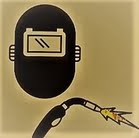Welding Insights
Category Title: Welding Insights
Welcome to our Welding Insights category, your one-stop destination for a wealth of knowledge and resources dedicated to the art and science of welding. Whether you’re an experienced welder, a novice looking to learn, or a professional seeking the latest industry updates, this category is your gateway to all things welding.
Explore a diverse range of topics, from welding techniques and best practices to the latest advances in welding technology. Our expertly crafted articles, guides, and tutorials provide valuable insights that can enhance your welding skills and keep you up-to-date with industry trends.
What You’ll Find in Welding Insights:
Welding How-Tos: Discover step-by-step tutorials and expert tips on various welding processes, including shielded metal arc welding (SMAW), gas tungsten arc welding (GTAW/TIG), gas metal arc welding (GMAW/MIG), and more. Learn the techniques that will help you create strong, reliable welds.
Welding Certifications: Dive into the world of welding qualification and certification. Understand the requirements for welder performance qualification (WPQ) and welding procedure qualification (WPQ). Stay informed about the latest updates in welding codes and standards.
Welding Safety: Safety is paramount in welding. Explore articles on protective gear, hazard awareness, and safe practices to ensure your well-being on the job.
Welding Inspections: Gain insights into non-destructive testing (NDT) methods, quality control, and welding inspection techniques. Learn how to identify and rectify common welding defects.
Welding Applications: Explore real-world applications of welding across industries, from aerospace and automotive to construction and manufacturing. Understand how welding plays a crucial role in building our world.
Welding Innovations: Stay ahead of the curve with updates on the latest welding technologies and innovations. Learn about cutting-edge equipment, automation, and digital tools that are shaping the future of welding.
Welding Community: Engage with fellow welders, share your experiences, and seek advice in our interactive forums and Q&A sections. Connect with a vibrant community of welding enthusiasts and professionals.
Whether you’re passionate about welding as a hobby or rely on it for your livelihood, our Welding Insights category is here to empower you with the knowledge and skills you need to excel in the world of welding. Join us on this journey of discovery and mastery, where the sparks truly fly, both figuratively and literally!
The updated ASME B31.3-2024 edition brings renewed attention to a critical design parameter in high-temperature piping systems – the Weld Joint Strength Reduction Factor (W). This factor plays a pivotal role in ensuring the integrity, safety, and reliability of piping systems exposed to elevated temperatures. In this article, we’ll explore what Factor W is, when […]
Fractography is the study of fracture surfaces of materials, especially metals, to determine the causes and mechanisms of failure. This technique plays a pivotal role in metallurgy, materials science, and engineering failure investigations. By examining the surface of broken components using tools like Scanning Electron Microscopy (SEM) or low-magnification stereo-microscopy, engineers can uncover deep insights
Welding plays a critical role in the fabrication and assembly of metal structures, and one of the most commonly used types of welds in engineering and construction is the fillet weld. Whether used in T-joints, lap joints, or corner joints, fillet welds are known for their ease of application and strength. However, to ensure the
The ASME #B31.1 – 2022 Power Piping Code plays a pivotal role in ensuring the integrity and safety of power piping systems. One crucial aspect of this code is the meticulous examination and testing of welds to ascertain their quality and structural soundness. In this article we will discuss visual examination as per Chapter VI
Taxes are an essential source of revenue for any government, facilitating the provision of public services such as education, healthcare, infrastructure, and national defense. Tax systems are designed to collect funds in a way that is fair and effective, and they typically include both direct and indirect taxes. Understanding the difference between these two types
Titanium, light, corrosion resistant, and extremely strong material. Titanium is a silvery-gray metal with a density of approximately half that of steel i.e 4.51g/cm3 (0.163 lb/in³). Opposite to common beliefs titanium welding is not a rocket science. Titanium posses good weldability. To enhance its suitability for structural applications, titanium is alloyed with elements such as
Six Sigma is a game-changing methodology in the modern world of business, where efficiency and quality are paramount. It helps organizations achieve excellence, reduce costs, and enhance customer satisfaction through data-driven decision-making and process improvement. What is Six Sigma? Six Sigma is a disciplined, systematic approach to vary and reduce process variation while eliminating defects.
In today’s fast business environment, an orderly, efficient, and productive workspace is very important for everyone. One of the most known methodologies for this is the 5S methodology. This comes from Japan. The 5S system basically explains what to do, how to do it, how to implement it in order to increase productivity by making sure that the workplace is clean, organized, and efficient. However, the 5S could be implemented in any industry. What is 5S? The 5S methodology contains five principles, each starting with the letter “S”. These
Iron and carbon are the most abundant materials present in steel. Pure iron is not particularly strong or hard on its own, so it is the addition of carbon/other alloying elements that gives steel its increased strength. We will discuss carbon steel types in this article. Carbon steel is a steel with carbon content from
Stainless steel also known as inox, corrosion-resistant steel(CRES), and rustless steel, is an alloy of iron which is resistant to corrosion and rust. It contains iron with chromium, nickel and other elements like molybdenum, carbon, manganese and nitrogen depending on specific grade. Stainless steel’s corrosion resistant property results from presence of chromium 10.5 % or
